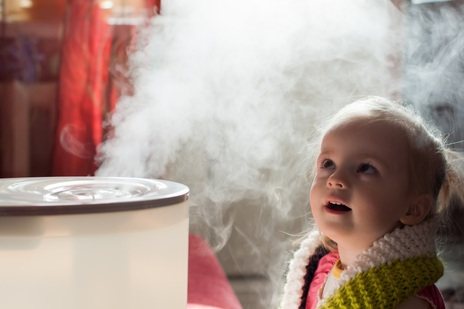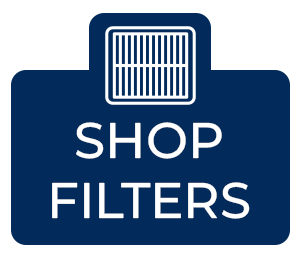We are often keen on maintaining the ideal temperature in our homes by constantly adjusting the thermostat to find the sweet spot between the too hot and too cold setting. However, a vital aspect of the home’s climate that tends to be forgotten about is the humidity level, or relative humidity (RH).
Humidity is the amount of moisture present in the surrounding air, ranging from high in warm weather to low in cold weather. Usually, the climate is responsible for regulating the RH value. Still, at times, extreme weather conditions may cause too high or too low humidity levels, which may result in health implications such as shortness of breath and coughing.
Experiencing an unhealthy humidity level within your home can lead to respiratory health issues and colds, so it’s essential to address this with machines that help maintain the appropriate humidity levels when needed. This is where humidifiers and dehumidifiers come in.
Humidifiers
Humidifiers are essential devices that add moisture back into the air, mainly in the form of mist, to improve the air quality of your home. They are helpful when the air is dry in winter by combating health complications such as allergies and nasal congestion. Additionally, humidifiers effectively treat dry skin, sore throats, chapped lips and can significantly reduce the symptoms caused by the common cold.
Humidifiers come in two main models, and even though they work through different processes, they all add moisture to the air. These include:
- Warm mist humidifiers
- Cool mist humidifiers
Warm Mist Humidifiers
The warm mist humidifiers are often called steam vaporizers, and their operation involves boiling water and spreading the steam into the air. They use a heating element in the process, and they can slightly warm the air within the room as they operate.
Warm mist humidifiers help reduce bacteria and germs in the air and achieving higher moisture saturation. Additionally, warm mist humidifiers are augmented with oils to add fresh scents into the air and can be used with medicated products to improve cough relief.
They operate without an internal fan and are quieter than other models. However, the warm mist humidifiers risk causing burns if pets or children knock them over. For this reason, they should be kept safe and out of reach.
Cool Mist Humidifiers
Cool mist humidifiers are considered a safer option for households with babies and pets since there is no risk associated with scalding. These types of humidifiers evaporate water in the air by using a fan. They are ideal for all-year-round use because of the chilling effect they bring into the room. Due to their simple design, they are easier to clean and maintain.
However, they risk bacteria buildup within the humidifier, which can be dispersed into the air which can cause health implications. More so, their operation can be noisy as a result of the rotations of the fan. The cool mist humidifiers come in different types, including:
1. Evaporative Humidifiers
This humidifier uses a fan to blow warm air over a wet filter and release vapor into the air. They capitalize on the evaporation process to add moisture to the air and are usually larger to accommodate the fan. They are ideal and are less likely to cause mold growth since they don’t lead to over-condensation. The downside to using the evaporative humidifier is that it may require constant cleaning, and you’ll eventually need to replace the fan.
2. Ultrasonic Humidifiers
This type of humidifier utilizes a high-speed vibrating plate that converts water into a fine mist. When it comes to cool mist humidifiers, the ultrasonic humidifier is the quieter option since it has a smaller fan and no gurgling water effect. The cleaning process involves rinsing the tank and internals.
Ultrasonic humidifiers come in several shapes, and the most common one is the raindrop model, which ejects the resultant mist from the top. Additionally, the ultrasonic models are fitted with USB power and LED lights, making them a unique and stylish option for your home.
3. Impeller Humidifiers
The impeller humidifiers work with the aid of a high-speed rotary disk that disintegrates water into tiny droplets and disperses it into the air. They are less expensive and are among the child friendly-options available.
The downside to using impeller humidifiers is that they work in single rooms, and they require regular maintenance to eliminate the risk of bacteria buildup.
Dehumidifiers
Dehumidifiers do the opposite of humidifiers. They are devices used to remove excess moisture from the air, thereby, maintaining dry indoor air quality. They are commonly used during the summer months and can reduce your home’s relative humidity level to the required 30%.
Excessive moisture within your home is dangerous as it leads to mold growth and increases the chances of pest infestation such as dust mites. These pests and mold cause allergic reactions. Additionally, the hot, excess humid air can lead to airway constriction. The dehumidifiers’ working principle involves taking warm air through a fan that directs it into metal coils and cooling it down.
As with humidifiers, dehumidifiers are available in different options.
1. Refrigerant Dehumidifiers
The refrigerant dehumidifier is a common type of dehumidifier that is used in the household setting. Although it doesn’t contain much cooling power compared to the other models, it is still helpful in maintaining healthy humidity levels.
refrigerant dehumidifiers operate by using a fan to capture warm air and then cool it down using metal coils. The metal coils contain a chemical refrigerant which cools them and reduces the system’s temperature. As the air shrinks, the water present condenses, and the air free of moisture is directed back into the house.
2. Desiccant Dehumidifiers
Desiccant dehumidifiers are powerful and are primarily used for commercial processes that require humidity levels to be significantly reduced in larger margins from 45% to around 1%. They are ideal for the commercial storage of pharmaceuticals, chemicals, and food products. They utilize the process of chemical attraction to reduce humidity levels.
Benefits of Humidifiers and Dehumidifiers
Humidifiers add moisture to the air and eliminate airway infections such as bronchitis and nosebleeds. They are ideal for those living in cold and dry climates.
Dehumidifiers help reduce the excess moisture from the air, minimizing the risks of mold growth and pest infestation. They are helpful for people with allergies and asthmatic health conditions and are used in warm and muggy seasons.
Wondering What to Choose This Winter?
Both humidifiers and dehumidifiers play significant roles in regulating the level of humidity within your home. To choose between the two, you need to be guided by the RH value of your home. If the RH value is below 30%, then you should get a humidifier to boost the levels. If the RH value is above 50%, then you should get a dehumidifier to remove the excess moisture.
Alternatively, you can engage the We Care Plumbing, Heating, & Air team to learn more about humidifiers and dehumidifiers. We’ll be more than happy to guide you through your selection process. Additionally, we offer cooling and heating services in Southern California. We specialize in AC repair, maintenance, and installation.
Related Articles
How to Reduce Your Southern California Indoor Humidity
Keeping Optimal Indoor Humidity Levels
Why You Should Use a Humidifier During Flu Season
Author Bio: Rusty Cochran
 Rusty Cochran is the President of We Care Plumbing, Heating and Air Conditioning. We Care began humbly, operating in his family’s living room. Under Rusty’s strong leadership, We Care has grown from 2 employees to over 200 employees. We Care Plumbing, Heating and Air has gained recognition across the HVAC industry, receiving numerous awards and certifications, including being named the ACCA Contractor of the Year, The Map Presidential Award several times, Angie’s List Super Service Award, NATE certification, and multiple Dave Lennox Awards. LinkedIn Profile
Rusty Cochran is the President of We Care Plumbing, Heating and Air Conditioning. We Care began humbly, operating in his family’s living room. Under Rusty’s strong leadership, We Care has grown from 2 employees to over 200 employees. We Care Plumbing, Heating and Air has gained recognition across the HVAC industry, receiving numerous awards and certifications, including being named the ACCA Contractor of the Year, The Map Presidential Award several times, Angie’s List Super Service Award, NATE certification, and multiple Dave Lennox Awards. LinkedIn Profile







